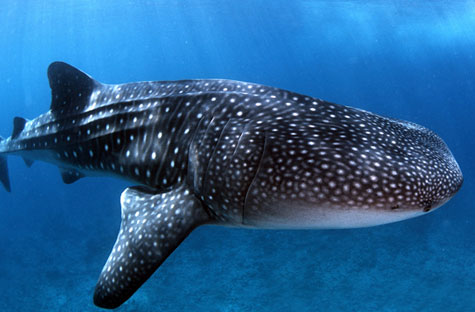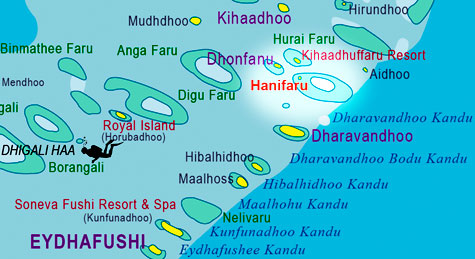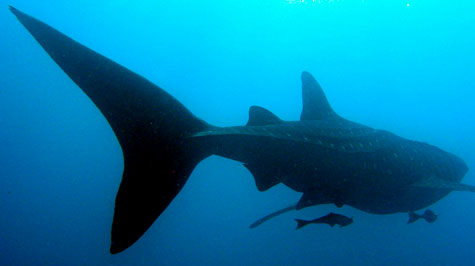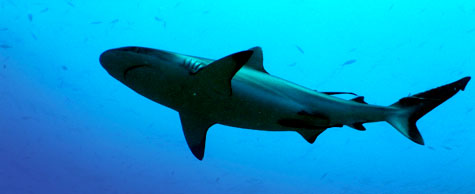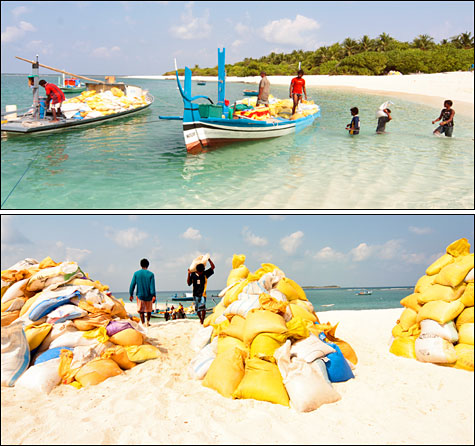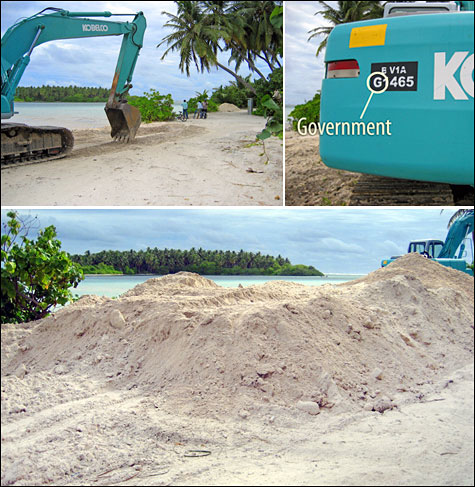NEW HOMELAND ELSEWHERE IS NOT THE ONLY SOLUTION FOR CLIMATE VICTIMS OF THE MALDIVES
The United Nations Intergovernmental Panel on Climate Change (IPCC) has recently projected in its latest report, the rise of the sea level worldwide by two feet by 2100 as a result of melting ice sheets and the expanding of the sea by warming seawater.
If the IPCC projection is accurate, the white beaches of the Maldives could start to dissolve just like ice sheets into the warming water of the Indian Ocean.

A Typical Low-Lying Atoll Island of Maldives
Mohamed Nasheed, who was recently sworn in as the country’s first democratically elected president told a British newspaper “We can do nothing to stop climate change on our own and so we have to buy land elsewhere,” namely Sri Lanka, India and Australia, as possible spots for a refuge and said they have been receptive to the idea. He also said “It’s an insurance policy for the worst possible outcome”. “We do not want to leave the Maldives, but we also do not want to be climate refugees living in tents for decades,” he added.
President Nasheed plans to set aside some of the country’s $1 billion annual tourist revenues to acquire what could be described as a contingency country. President Nasheed intends to create a sovereign wealth fund to relocate the population, much like Arab states have done with oil revenues. “Kuwait might invest in companies–we will invest in land,†he said.
The Maldives lies in a strategic position astride and along major sea lanes in the middle of an old trade route in the Indian Ocean where US$200 billion of the world’s maritime passes through every year and possesses a unique island culture and customs. But the big question is whether the natives of these islands who have lived in harmony with the ocean for more than 2000 years could easily abandon their islands just like that and relocate the entire atoll nation to higher grounds elsewhere.

newland-1a.swf
Contingency adapted island with 3 meters elevation. As projected by IPCC the sea level will rise by 2 feet by 2100.
present-1a.swf
As projected by IPCC the sea level will rise by 2 feet by 2100. An average Maldivian island is less than a meter above sea level.
Almost 80% of the islands of the Maldives are just 1 meter or less above sea level and the natives of these low-lying coral islands do not have much of a choice, except for the adaptation of their islands or out migration to higher grounds elsewhere. But the choice should be left to the individuals to make – whether to stay in adapted sinking islands or to migrate elsewhere.
Over the longer term, in order to accommodate the climate IDPs (internally displaced persons), at least seven adapted contingency islands need to be developed in seven different regions across the archipelago of the Maldives. In actual fact, all the resort islands in the Maldives could be adapted as water villages or boat houses, but developing all 200 inhabited islands as elevated adapted islands is a formidable task.
Of course, as a matter of principles Bluepeace does not encourage dredging and reclaiming lagoons. However, in a doomsday scenario with not many other choices, developing elevated adapted islands that may be the only solution left in a country’s climate contingency plan. But certain measures such as importing sand and other materials for reclamation and using silt fences to control sediments need to be taken to minimize the ecological damage to the existing local environment.
island4.swf
A model of a contingency adapted island with 3 meters elevation where buildings are developed on stilts to reduce the strength of floods and extream storm events on the manmade island. As projected by IPCC, the sea level will rise by less than a meter by 2100 but the contingency adopted island would still be more than 2 meters above the sea level . This island would also increase the country’s fresh water availability by developing large groundwater table.
What is so sad is that there are still no signs that the developed nations will agree to the terms of the adaptation funds created in the Bali climate change talks. Developed nations should help the contingency country of the Maldives to develop at least seven elevated islands in different parts of the country as contingency islands.
The international community, especially the major polluters in the industrialized world are under moral obligation to take the differentiated responsibility to accommodate the victims of climate from the low-lying countries on high grounds and urgently formulate a multilateral treaty in facilitating citizenship.
The Maldives, which will be hit hardest by global warming, should demand developed nations to agree on the terms and modalities to allocate adaptation funds to developing countries based on their respective level of vulnerability to climate change, including the calculation of the rise in the sea level.
